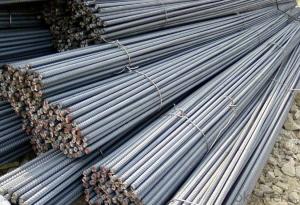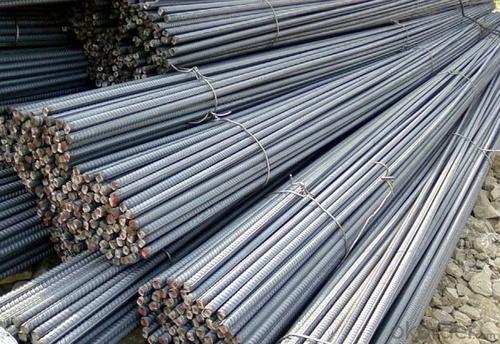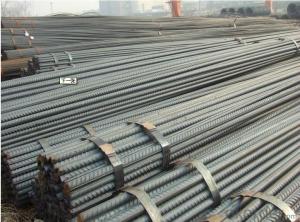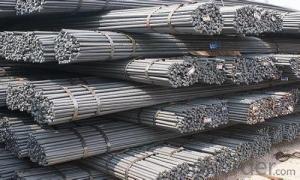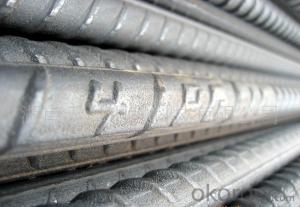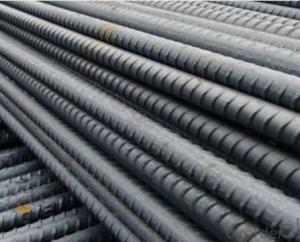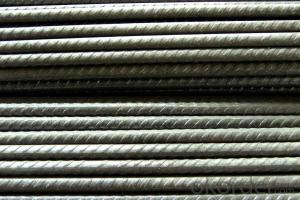Hot Rolled Deformed Bar ou Reinforcement Bar 6mm-50mm
- Loading Port:
- Tianjin
- Payment Terms:
- TT or LC
- Min Order Qty:
- 25 m.t.
- Supply Capability:
- 100000 m.t./month
OKorder Service Pledge
OKorder Financial Service
You Might Also Like
Product Description:
OKorder is offering high quality Hot Rolled Steel I-Beams at great prices with worldwide shipping. Our supplier is a world-class manufacturer of steel, with our products utilized the world over. OKorder annually supplies products to European, North American and Asian markets. We provide quotations within 24 hours of receiving an inquiry and guarantee competitive prices.
Product Applications:
Deformed bar is widely used in buildings, bridges, roads and other engineering construction. Big to highways, railways, bridges, culverts, tunnels, public facilities such as flood control, dam, small to housing construction, beam, column, wall and the foundation of the plate, deformed bar is an integral structure material. With the development of world economy and the vigorous development of infrastructure construction, real estate, the demand for deformed bar will be larger and larger
Product Advantages:
OKorder's Steel I-Beams are durable, strong, and resist corrosion, exact size, regular package, chemical and mechanical properties are stable.
Main Product Features:
· Premium quality
· Prompt delivery & seaworthy packing (30 days after receiving deposit)
· Corrosion resistance
· Can be recycled and reused
· Mill test certification
· Professional Service
· Competitive pricing
Product Specifications:
Manufacture: Hot rolled
Grade: BS4449
Certificates: ISO, SGS, BV, CIQ
Diameter: 6mm,8mm,10mm,12mm,14mm,16mm,18mm,20mm,
22mm,25mm,28mm,32mm,36mm,40mm,50mm
Length: 6M, 9M,12M or as required
Packaging: Export packing, nude packing, bundled
Chemical Composition: (Please kindly find our chemistry of our material based on HRB500 as below for your information)
Grade | Technical data of the original chemical composition (%) | ||||||
C | Mn | Si | S | P | V | ||
HRB400 | ≤0.25 | ≤1.60 | ≤0.80 | ≤0.045 | ≤0.045 | 0.04-0.12 | |
Physical capability | |||||||
Yield Strength (N/cm²) | Tensile Strength (N/cm²) | Elongation (%) | |||||
≥400 | ≥570 | ≥14 | |||||
Theoretical weight and section area of each diameter as below for your information:
Diameter(mm) | Section area (mm²) | Mass(kg/m) | Weight of 12m bar(kg) |
6 | 28.27 | 0.222 | 2.664 |
8 | 50.27 | 0.395 | 4.74 |
10 | 78.54 | 0.617 | 7.404 |
12 | 113.1 | 0.888 | 10.656 |
14 | 153.9 | 1.21 | 14.52 |
16 | 201.1 | 1.58 | 18.96 |
18 | 254.5 | 2.00 | 24 |
20 | 314.2 | 2.47 | 29.64 |
22 | 380.1 | 2.98 | 35.76 |
25 | 490.9 | 3.85 | 46.2 |
28 | 615.8 | 4.83 | 57.96 |
32 | 804.2 | 6.31 | 75.72 |
36 | 1018 | 7.99 | 98.88 |
40 | 1257 | 9.87 | 118.44 |
50 | 1964 | 15.42 | 185.04 |
FAQ:
Q1: How soon can we receive the product after purchase?
A1: Within three days of placing an order, we will begin production. The specific shipping date is dependent upon international and government factors, but is typically 7 to 10 workdays.
Q2: What makes stainless steel stainless?
A2: Stainless steel must contain at least 10.5 % chromium. It is this element that reacts with the oxygen in the air to form a complex chrome-oxide surface layer that is invisible but strong enough to prevent further oxygen from "staining" (rusting) the surface. Higher levels of chromium and the addition of other alloying elements such as nickel and molybdenum enhance this surface layer and improve the corrosion resistance of the stainless material.
Q3: Can stainless steel rust?
A3: Stainless does not "rust" as you think of regular steel rusting with a red oxide on the surface that flakes off. If you see red rust it is probably due to some iron particles that have contaminated the surface of the stainless steel and it is these iron particles that are rusting. Look at the source of the rusting and see if you can remove it from the surface.
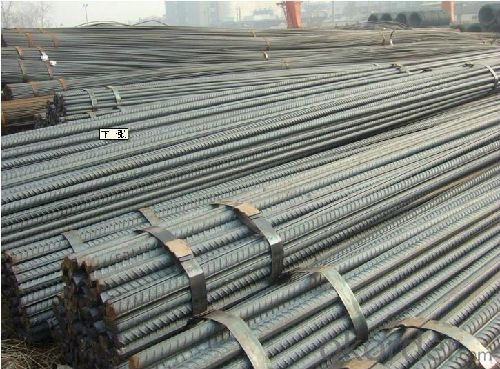
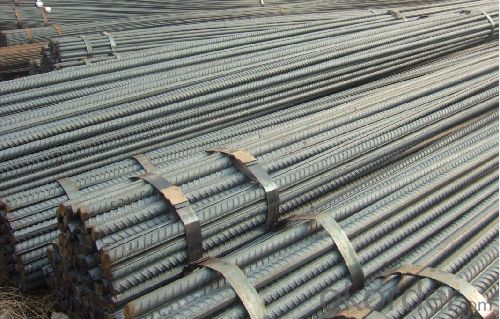
- Q: How are steel rebars used in railway track construction?
- Steel rebars are used in railway track construction to reinforce the concrete components, such as sleepers and footings. They provide additional strength and stability to the track, ensuring it can withstand heavy loads and the constant movement of trains.
- Q: What are the common quality control tests for steel rebars?
- Some common quality control tests for steel rebars include visual inspection for surface defects, measurement of dimensions and tolerances, tensile strength testing, bending tests, and chemical composition analysis.
- Q: What is the role of steel rebars in tunnel shaft construction?
- The role of steel rebars in tunnel shaft construction is crucial for ensuring the structural integrity and strength of the tunnel shaft. Steel rebars, also known as reinforcement bars, are used to reinforce the concrete structures in the tunnel shaft. The main purpose of steel rebars is to provide additional tensile strength to the concrete. While concrete is strong in compression, it is relatively weak in tension. By placing steel rebars within the concrete, the tensile forces are transferred from the concrete to the steel, effectively increasing the overall strength and stability of the structure. In tunnel shaft construction, steel rebars are typically placed in a grid pattern throughout the concrete walls, floor, and ceiling of the shaft. This grid pattern helps distribute the tensile forces evenly and prevents the concrete from cracking or crumbling under the pressure. Steel rebars also play a crucial role in preventing the concrete from expanding or contracting due to temperature changes. By providing reinforcement, they help to control the potential for cracking or structural damage caused by thermal expansion and contraction. Additionally, steel rebars can improve the durability and longevity of the tunnel shaft. They enhance resistance against external forces such as earthquakes, ground settlements, and water pressure. Moreover, they can reinforce the tunnel shaft against potential impacts or collisions, ensuring the safety of the structure and its occupants. In summary, the role of steel rebars in tunnel shaft construction is to reinforce the concrete structures, increase their tensile strength, prevent cracking, control thermal expansion, enhance durability, and provide resistance against external forces. Their presence is essential for creating a strong and reliable tunnel shaft.
- Q: What is the weight of a typical steel rebar?
- The weight of a typical steel rebar can vary depending on its size and length. However, a commonly used size is a #4 rebar, which has a diameter of 1/2 inch. A #4 rebar typically weighs around 0.67 pounds per foot or 9.5 pounds per 14-foot length. It is important to note that different sizes of steel rebar will have different weights, so it is crucial to consider the specific size and length when determining the weight.
- Q: Can steel rebars be used in water treatment facilities?
- Yes, steel rebars can be used in water treatment facilities. Steel rebars, or reinforcing bars, are commonly used in construction projects to strengthen concrete structures. In water treatment facilities, where concrete is used for various structures such as tanks, basins, and pipelines, steel rebars are often incorporated to provide added strength and durability. Water treatment facilities involve the treatment of water to make it safe for consumption or other purposes. Concrete is a preferred material in these facilities due to its ability to withstand the harsh conditions of water treatment processes, such as exposure to chemicals, high temperatures, and pressure. Steel rebars are essential in reinforcing the concrete structures to ensure they can withstand these demanding conditions. The corrosion resistance of steel rebars is a critical factor to consider when using them in water treatment facilities. Since water treatment facilities often involve the use of chemicals and exposure to moisture, it is important to choose rebars that have appropriate corrosion protection. This can be achieved by using stainless steel rebars or by applying protective coatings to the rebars. It is also worth noting that proper design, construction, and maintenance practices are essential in ensuring the long-term performance of steel rebars in water treatment facilities. Adequate cover thickness, concrete quality, and proper installation techniques are important considerations to prevent corrosion and ensure the rebars provide the desired structural integrity. In conclusion, steel rebars can be effectively used in water treatment facilities to reinforce concrete structures and provide the necessary strength and durability. However, it is important to choose corrosion-resistant rebars and adhere to proper design and construction practices to ensure their long-term performance in these facilities.
- Q: Can steel rebars be used in swimming pool construction?
- Yes, steel rebars can be used in swimming pool construction. They are often used as reinforcement in the concrete structure of the pool to provide strength and durability. The rebars help to prevent cracking and ensure the pool can withstand the pressure of the water.
- Q: Can steel rebars be used in structures with high levels of chloride or sulfate attack?
- No, steel rebars should not be used in structures with high levels of chloride or sulfate attack as these chemicals can cause corrosion and deterioration of the steel, compromising the structure's integrity.
- Q: What is the lifespan of steel rebars in concrete structures?
- The lifespan of steel rebars in concrete structures can vary depending on several factors. Generally, steel rebars are designed to provide durability and strength to concrete structures. With proper design, construction, and maintenance, steel rebars can last for several decades or even up to a century in concrete structures. One crucial factor influencing the lifespan of steel rebars is the quality of materials used. High-quality rebars manufactured with corrosion-resistant coatings or stainless steel tend to have a longer lifespan compared to regular carbon steel rebars. Additionally, the quality of concrete used and its ability to protect the rebars from moisture and corrosive agents is also important. Environmental conditions play a significant role in determining the lifespan of steel rebars. Exposure to harsh climates, such as areas with high humidity, saltwater, or acidic environments, can accelerate corrosion and reduce the lifespan of the rebars. Adequate protective measures, such as proper concrete cover thickness, waterproofing, and the use of corrosion inhibitors, can help extend the lifespan of steel rebars in such conditions. Maintenance and inspection are essential to ensure the longevity of steel rebars in concrete structures. Regular inspections for signs of corrosion, cracking, or damage should be conducted, and any necessary repairs or protective measures should be undertaken promptly. In some cases, periodic coating or rebar replacement may be required to maintain the structural integrity of the concrete elements. In summary, the lifespan of steel rebars in concrete structures can range from several decades to over a century, depending on various factors such as material quality, environmental conditions, and proper maintenance. By employing appropriate design, construction, and maintenance practices, the lifespan of steel rebars can be significantly extended, ensuring the long-term integrity and durability of the concrete structure.
- Q: What is the role of steel rebars in preventing concrete cracking?
- Steel rebars play a crucial role in preventing concrete cracking by providing reinforcement and enhancing the overall strength and durability of concrete structures. When concrete undergoes tensile stress, it tends to crack due to its low tensile strength. However, steel rebars, which are typically embedded within the concrete, act as a reinforcement by absorbing and distributing these tensile forces throughout the structure. The presence of steel rebars in concrete helps to counteract the natural tendency of concrete to crack under tension. When a load is applied to the concrete, the rebars bear a significant portion of the tensile stress, preventing it from being solely concentrated on the concrete matrix. This distribution of forces helps to minimize the formation and propagation of cracks, ensuring the structural integrity of the concrete. Moreover, steel rebars also contribute to the overall strength and durability of concrete structures. The combination of steel's high tensile strength and concrete's compressive strength results in reinforced concrete, which exhibits superior resistance to various external forces such as bending, shear, and seismic loads. This added strength makes the concrete less susceptible to cracking and enhances its ability to withstand heavy loads and environmental factors over time. In summary, steel rebars play a crucial role in preventing concrete cracking by providing reinforcement, absorbing and distributing tensile forces, and enhancing the overall strength and durability of concrete structures. Their presence significantly improves the structural integrity and longevity of concrete, making it a reliable and widely used construction material.
- Q: How much does a futures screw do?
- How much is one hand steel futures: the emphasis in the futures market is the margin system, which is one of the differences between the stock markets. The so-called margin system, if the margin is 10%, then you only use the actual price of 10% of the price can be traded.With the delivery day approaching, the margin will gradually increase.Margin = hand screw thread steel per ton steel price * * tonnage margin ratio, if the steel price is now 1900, steel is a hand of 10 tons, the hand margin is 1900 yuan / ton *10%=1900 yuan *10 tons.
Send your message to us
Hot Rolled Deformed Bar ou Reinforcement Bar 6mm-50mm
- Loading Port:
- Tianjin
- Payment Terms:
- TT or LC
- Min Order Qty:
- 25 m.t.
- Supply Capability:
- 100000 m.t./month
OKorder Service Pledge
OKorder Financial Service
Similar products
Hot products
Hot Searches
Related keywords
